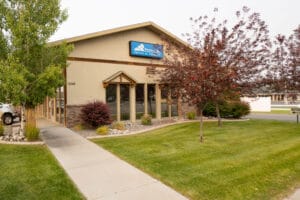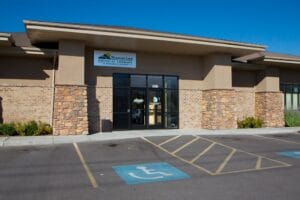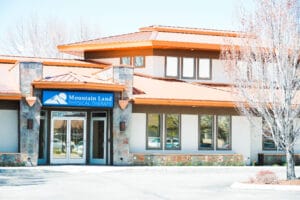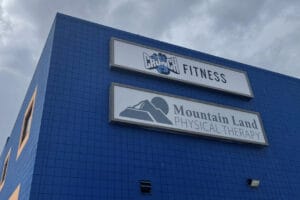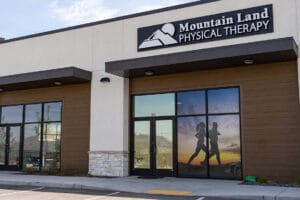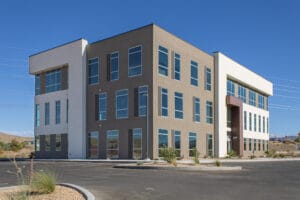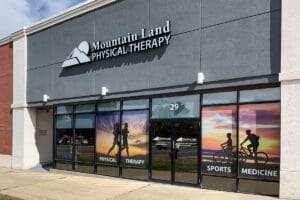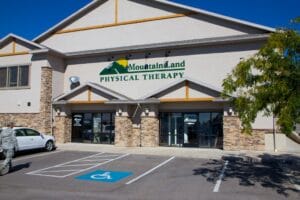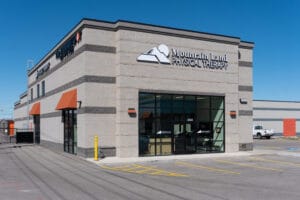TMD stands for Temporomandibular joint disorder. It is an umbrella term referring to a group of disorders at the jaw joint, called the Temporomandibular joint (TMJ). “TMD” and “TMJ” are often used interchangeably when referencing Temporomandibular joint disorders or problems with the jaw.
As physical therapists, we work with you to help restore the natural movement of your jaw and decrease the pain. We begin by evaluating your posture and neck movement. We also examine the TMJ and the movement of the jaw to determine how well the mouth opens, and if there are any abnormalities in the jaw motion.
Once we understand the nuances of your condition, we move forward with the necessary treatment. We provide hands-on manual therapy at the neck and jaw to restore full pain-free motion, postural education and strengthening exercises, and in some cases, electrical stimulation to help reduce
pain.
What Causes TMD?
There are many factors that cause jaw pain and its ability to function properly:
- Bad Posture: Bad posture causes forward head positioning, which puts a strain on the muscles, disk, and ligaments of the Temporo-Mandibular Joint (TMJ). The jaw is forced to rest in an open position, and the chewing muscles become overused.
- Chronic Jaw Clenching: Many people clench their jaw at night while sleeping, usually due to stress. This puts strain on the TMJ because of the constant stress on the joint and surrounding muscles.
- Teeth Alignment: If your teeth come together in an unusual way, greater stress is placed on your TMJ.
- Fracture: In a traumatic accident involving the face or head, a fracture to the lower jaw may result. Even when the fracture is completely healed, TMJ stiffness and pain may continue to remain.
- Surgery: Following surgery to the face and jaw, there may be a loss in mobility and function of the TMJ.
- Trismus (Lockjaw): This condition — where jaw muscles spasm and the jaw cannot be fully opened — can be both a cause and symptom of TMD.
How Can Physical Therapy Help TMJ/TMD?
Your physical therapist can help restore the natural movement of your jaw and decrease your pain. Treatments used by physical therapists for TMD include:
- Posture Education: Your physical therapist will teach you to be aware of your posture so you can improve the resting position of your jaw, head, neck, breastbone, and shoulder blades when sitting and walking.
- Improve Jaw Movement: Physical therapists use skilled hand movements called manual therapy to increase movement and relieve pain in your tissues and joints. Your therapist might also use manual therapy to stretch the jaw in order to restore normal joint and muscle flexibility or break up scar tissue. Your physical therapist will teach you exercises that don’t exert a lot of pressure on your TMJ but can strengthen the jaw muscles and restore more natural, pain-free motion.
- Special Pain Treatments: If your pain is severe, your physical therapist may use treatments such as electrical stimulation or ultrasound in addition to manual therapy to reduce your pain.
- TMJ Exercises: These videos cover some of the more common exercises that can be helpful in treating TMJ/TMD. Our TMJ Physical Therapists will work with you to identify exactly what will give you the best results and put together a combination of these and other exercises and treatment techniques to help relieve your pain.
Frequently Asked Questions
What are the Symptoms of TMD?
- Jaw fatigue
- Jaw/neck pain
- Pain with chewing
- Headaches
- Limited jaw range of motion
- Ringing in your ears
- Difficulty opening mouth
- Jaw clicking and popping
- Dizziness
- Locking jaw
How is TMD Diagnosed?
Your physical therapist will evaluate your posture and how your neck moves. They will examine the TMJ to find out how well it opens and whether there are abnormalities in your jaw motion. Your therapist might place his or her hand in your mouth in order to examine your jaw movement.
How is TMD treated?
Depending on the exact cause, TMD is often treated with a team approach. Dentists, oral surgeons and physical therapists work together, each offering specific expertise in addressing the cause of the TMD. Commonly, dentists will provide a custom night splint to allow the jaw muscles to rest and relax. Occasionally, an oral surgeon is required to surgically repair temporomandibular joint structures. Physical therapists use manual techniques, soft tissue massage and gentle exercises to restore function, including pain free mobility, chewing and talking.
How can I know what is causing my TMD and how it should be treated?
An effective treatment plan always begins with a thorough initial evaluation by a specialized professional. A dentist, oral surgeon or physical therapist specializing in TMD can provide this initial evaluation. After the initial evaluation, it is common for additional members of the team to be included in the treatment plan in order to effectively address all issues identified in the initial evaluation.
What should I expect on my first physical therapy visit?
Your physical therapist will begin with a skilled evaluation of the temporomandibular joint, associated muscles, and TMJ disc. If you have been referred by a dental or medical professional to therapy, then close attention will be given to any instructions provided by the professional and findings from the therapy evaluation will be communicated to the referring professional to ensure an effective team approach. A physical therapy plan of care will be communicated to you that will include the type of therapy (e.g. massage, exercise, etc.) and how long it will take to achieve your goals. Treatment will begin on your initial visit. Each visit typically lasts for about an hour.

